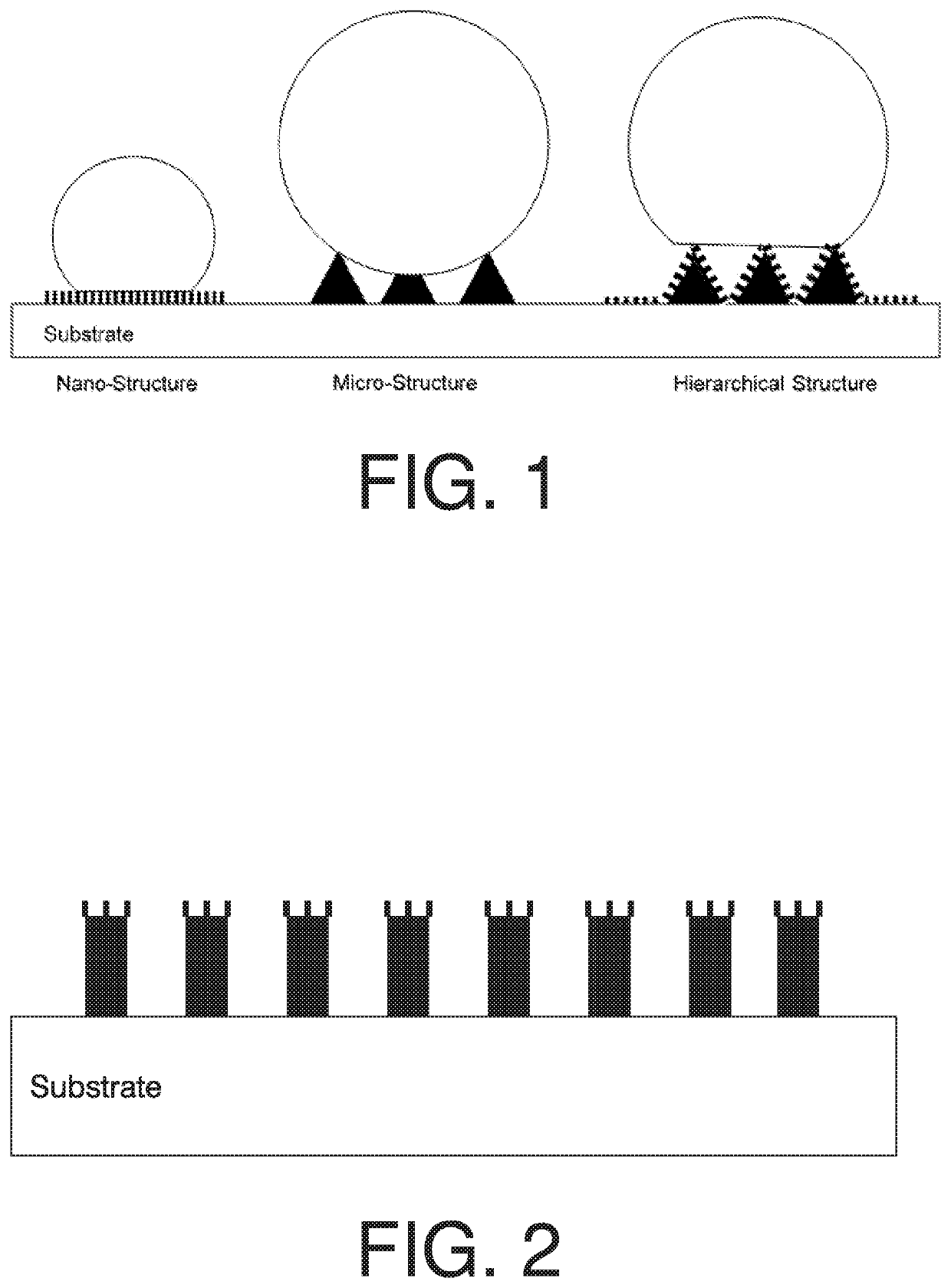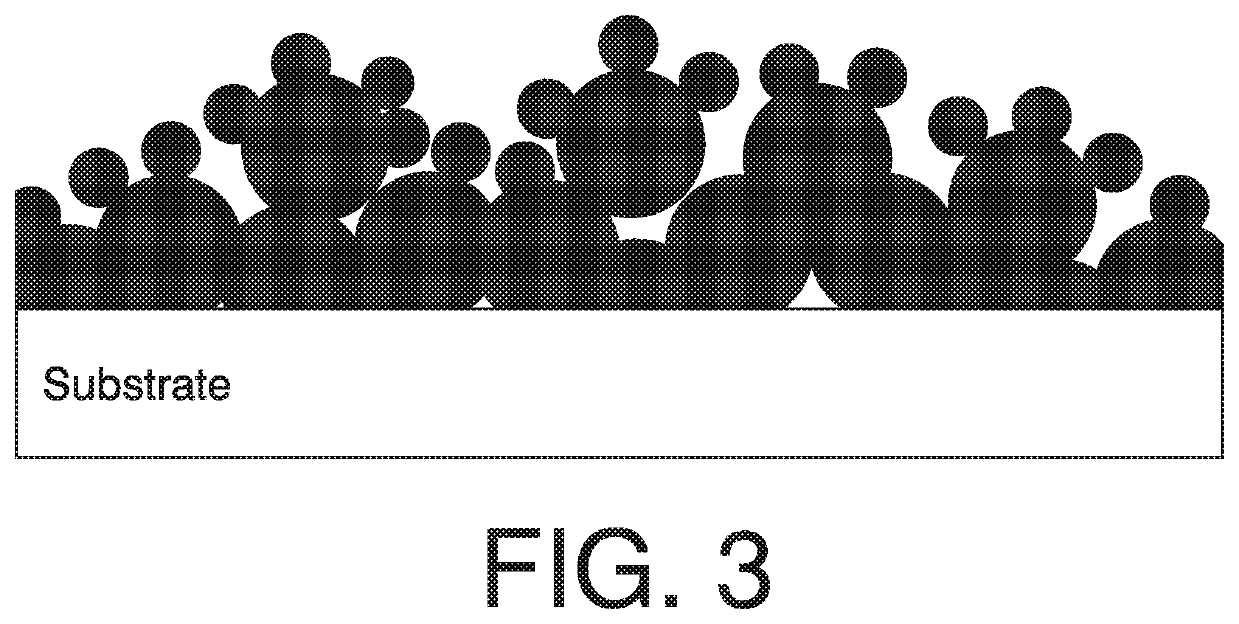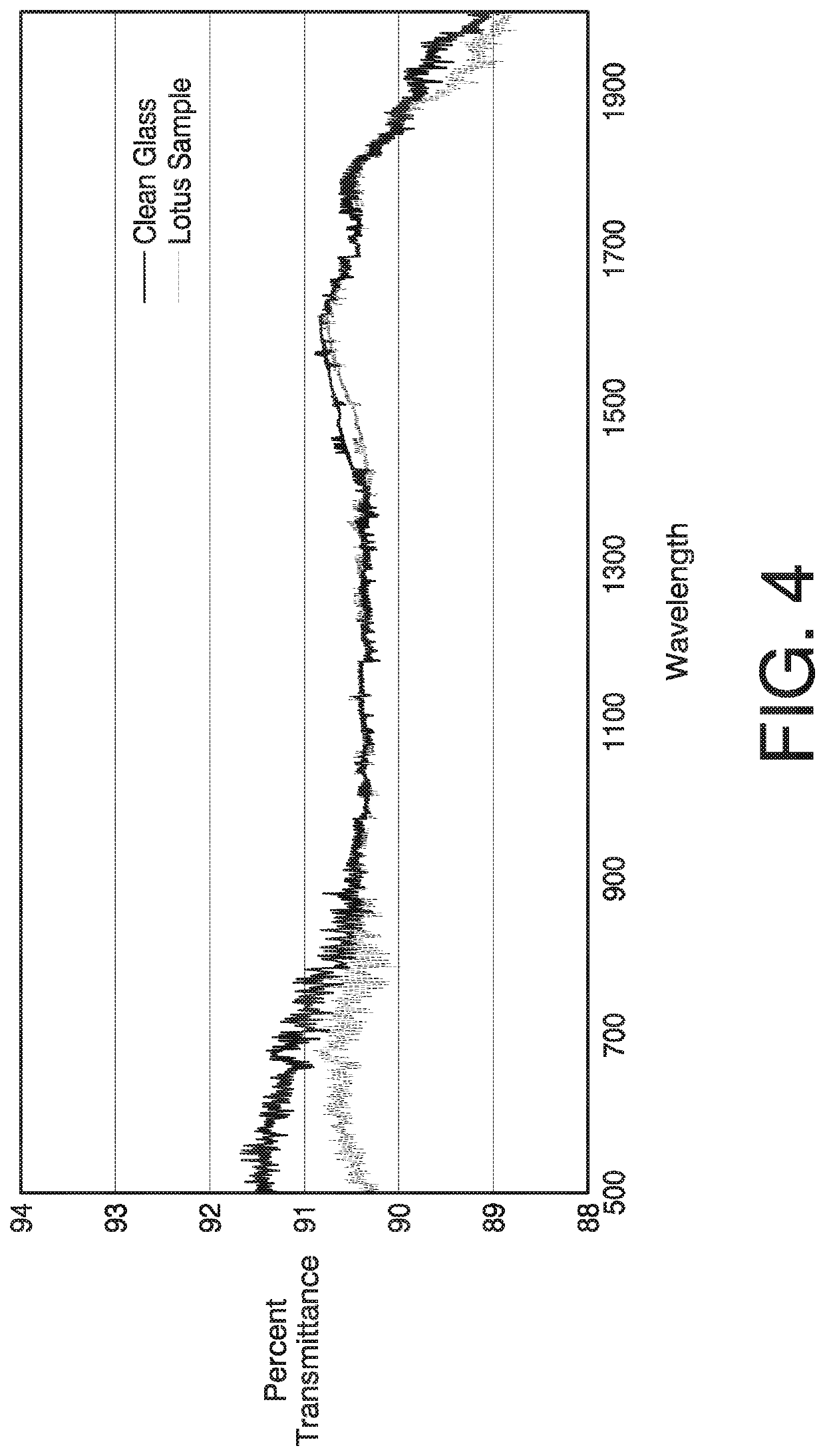Superhydrophobic and dust mitigating coatings
a technology of superhydrophobic and dust-mitigating coatings, applied in the direction of coatings, other chemical processes, chemistry apparatus and processes, etc., can solve the problems of the surface of the moon substantially degrading the performance of the extra-vehicle suit of the astronauts, and the contamination or accumulation of dust. , to achieve the effect of minimizing or eliminating dust, liquid and/or
- Summary
- Abstract
- Description
- Claims
- Application Information
AI Technical Summary
Benefits of technology
Problems solved by technology
Method used
Image
Examples
embodiment 1
Lotus Coating Suitable for Optics (WC2)
[0043]FIG. 5. shows a transparent lotus coating suitable for optics, according to one embodiment of the present invention, wherein the lotus coating does not have, nor does it require, a primer layer between, e.g., a substrate 505 (e.g. glass) and a nano-texture epoxy basecoat 515 (epoxy basecoat). The epoxy basecoat comprises nanoparticles and produces a nano-textured surface and preferably utilizes several sizes of nano-particles to produce a clumping effect as illustrated in FIG. 3. A self-assembling monolayer is then applied to make the coating hydrophobic (water droplet contact angles greater than 90°) or super hydrophobic (water droplet contact angles greater than 150°). The method of making the transparent lotus coating of this embodiment is described below and can comprise, consist essentially of, or consist of, the steps listed herein. All embodiments of the methods of the present invention can comprise, consist essentially of, or cons...
embodiment 2
Lotus Coating Suitable for Optics with Vacuum Deposition Layer (VAC)
[0053]In this embodiment, an additional layer of vacuum deposited material may be applied to the “Transparent Lotus Coating Suitable for Optics” formulation detailed in Embodiment 1, and this embodiment can be seen in FIG. 6. It is noted that the vacuum deposition process further increases the durability and hydrophobic properties of the self-assembled monolayer, and in addition, unexpectedly increases, or improves, adhesion between the layer of the self-assembled monolayer and the vacuum deposition layer. The adhesion of the vacuum deposition layer to the coating in Embodiment 1 also increased.
[0054]The method of making the transparent lotus coating of this embodiment is described as follows. First, a nano-textured epoxy basecoat 615 (epoxy basecoat) is created by mixing from 0.1 g to 0.5 g, preferably about 0.1 g, of silica nanoparticles having a 6:1 to 10:1 ratio, preferably an 8:1 ratio, of 15 nm particles to 80...
embodiment 3
Transparent Lotus Coating Suitable for Optics
[0063]This embodiment of the Lotus Coating does not have, nor does it require, a primer layer, and is schematically illustrated in FIG. 7. The epoxy basecoat produces the nano-texture and preferably utilizes several sizes of nano-particles to produce a clumping effect per FIG. 3. A self-assembling monolayer is then applied to make the coating hydrophobic (water droplet contact angles greater than 90 degrees) or super hydrophobic (water droplet contact angles greater than 150 degrees).
[0064]The method of making the transparent lotus coating of this embodiment is described as follows. Step one entails the creation of a nano-texture epoxy basecoat 715 (epoxy basecoat) by mixing from 0.55 g to 0.75 g, preferably about 0.66 g, of silica nanoparticles having a 6:1 to 10:1 ratio, preferably an 8:1 ratio, of 15 nm particles to 80 nm particles by mass. Also mixed is 0.2 ml to 0.6 ml, preferably about 0.4 ml, of 4-to-1 tap epoxy resin, 0.05 ml to 1...
PUM
| Property | Measurement | Unit |
|---|---|---|
| Temperature | aaaaa | aaaaa |
| Temperature | aaaaa | aaaaa |
| Time | aaaaa | aaaaa |
Abstract
Description
Claims
Application Information
 Login to View More
Login to View More - R&D
- Intellectual Property
- Life Sciences
- Materials
- Tech Scout
- Unparalleled Data Quality
- Higher Quality Content
- 60% Fewer Hallucinations
Browse by: Latest US Patents, China's latest patents, Technical Efficacy Thesaurus, Application Domain, Technology Topic, Popular Technical Reports.
© 2025 PatSnap. All rights reserved.Legal|Privacy policy|Modern Slavery Act Transparency Statement|Sitemap|About US| Contact US: help@patsnap.com



